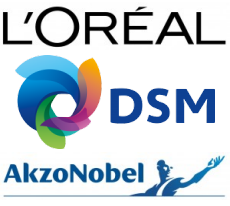Project Description
The pilots were intended to test the methodology proposed in the handbook during the 2nd phase of the Roundtable for Product Social Metrics.
Approaches tested: Quantitative and Scales-based
The L’Oréal Group, DSM and AkzoNobel have decided to test both approaches with two products: a serum and a hand cream (both from The Body Shop, one of L’Oréal’s brands). Both products contain ingredients from AkzoNobel and DSM. It was decided not to cover the whole life cycle of these products, but to focus on the stages where we could get information, such as production of ingredients and packaging components, manufacturing of the products, retail and usage. The end of life was excluded.
Application of the Methodology
This pilot was the opportunity to test the 2 approaches: the scales-based and the quantitative. By trying these two methods, the companies aimed at getting experience and insight about what is more feasible and relevant, according to the type of product. The participating companies decided to assess social topics related to the 3 stakeholder groups as described in the handbook i.e. workers, consumers and local communities. The social topics assessed for both the scales-based and the quantitative approaches were:
- Workers: Health and safety, wages, and social benefits;
- Consumers: Health and safety, and experienced well-being,
- Local communities: Access to tangible resources, and community engagement.
Operationalisation and Feasibility
The assessment was carried out with the support of different departments. At L’Oréal the following departments were involved: the Group CSR Department (in charge of coordination), the brand Sustainable Development Department, the brand Purchasing Department, the brand Marketing Department and the brand HR Department. DSM and AkzoNobel involved the Sustainability, the Purchasing and the Corporate Operations departments.
To perform the assessments we needed to collect data from the different stakeholders groups: ingredient and packaging suppliers, not only for their own production but also related to the local communities, the manufacturing plant workers, the retail workers and the brand itself regarding the consumer insights. Since such assessment is not something they were used to, it was quickly identified that there was a need for guidance and training. Specific questionnaires were then expanded. Most of the information that was required was available in internal company databases or questionnaires. The data were collected from the suppliers and through The Body Shop HR, CSR, purchasing and marketing departments.
The pilot took approximately 60 days, from the moment we sent the questionnaires until the assessment was completed. More than 95% of the time was spent in gathering data. On the basis of the data collected during the process we have been able to get an overview of the social impacts along the assessed life-cycle stages of the products.
The scales-based approach appeared to be more appropriate for this pilot. The quantitative approach appeared to be more complex related to the nature of information needed and to some confidentiality issues. The quantitative approach single number output does not allow precise identification of where the hotspots are along the supply chain and makes it then more difficult to improve the score.
The current social topics descriptions and proposed questionnaire provide good guidance on performing the methodology for the scales-based approach. The questionnaire was thought to be easy to implement. The subcontractors and suppliers have judged the time and effort required to do this assessment as fairly manageable. The assessment is feasible provided that the company allocates resources. The methodology is most feasible for products that are relatively advanced in the development process (ideally already on the market) as all data exist and can be collected. It would be less feasible at earlier stages of the development process as some data would be missing.
Value added
The assessment shows where potential social hotspots may occur. It monitors lines of improvement. In this pilot no particular hotspot has been identified. The assessment provides companies with more transparency regarding product production and use. The methodology of the assessment may also drive the suppliers towards more engagement on social benefits. Furthermore, the assessment allows companies to compare different products based on social criteria which might be helpful for improvement.
Additional insights
The Body Shop, DSM and AkzoNobel decided to test the two approaches on different products to be able to conclude which works best for the pilot. Moreover, the choice of the Body Shop products made this case interesting as the brand is responsible for product design and retail, and also works very closely with the local communities through The Community Fair Trade programme. Based on this pilot we have had the opportunity to discuss and improve the definitions for Consumer Health and Safety, and Consumer Experienced Well-being. These two social topics are of particular interest not only to avoid negative impacts, but also to explore ways of creating positive social impacts.


